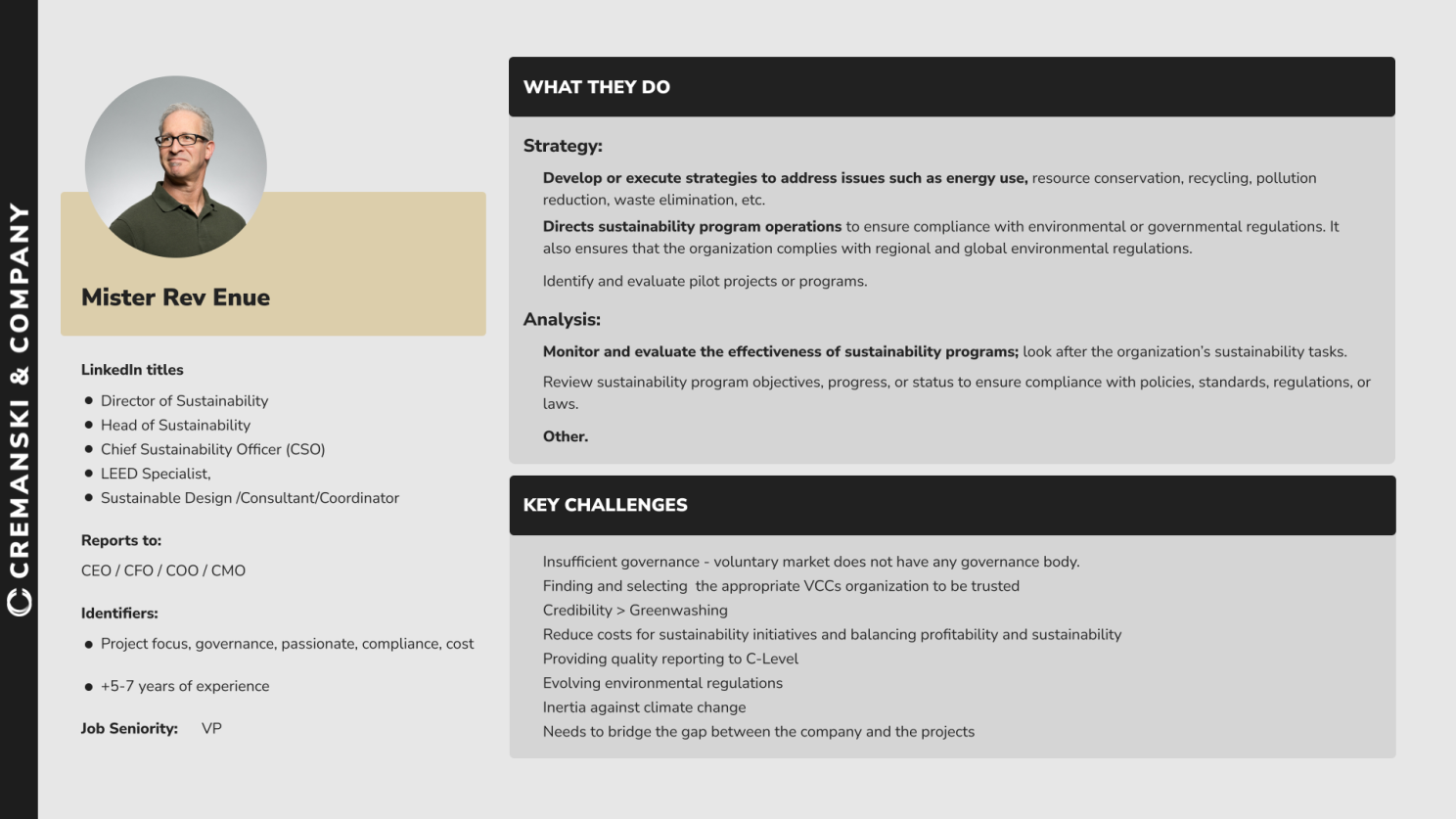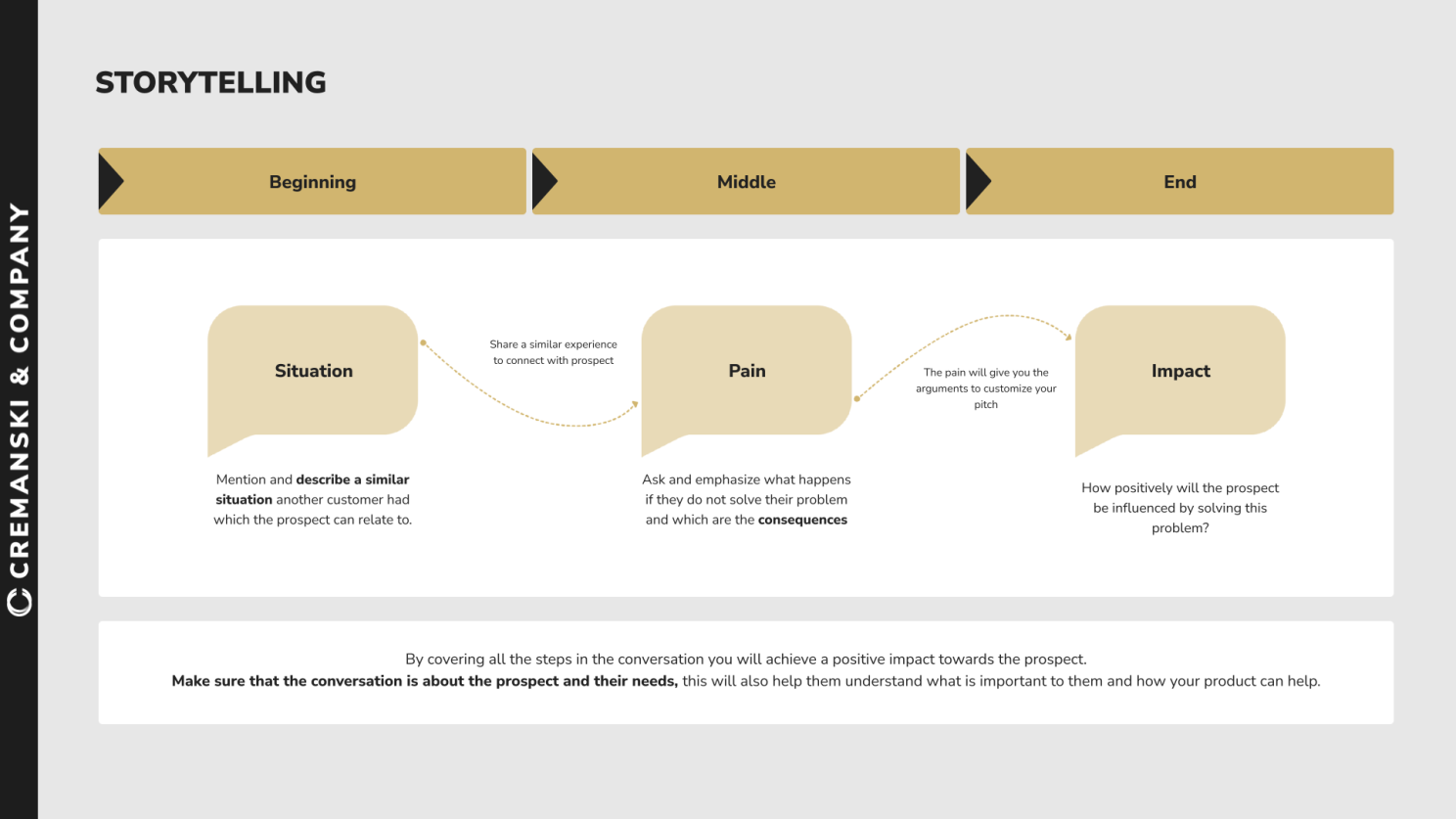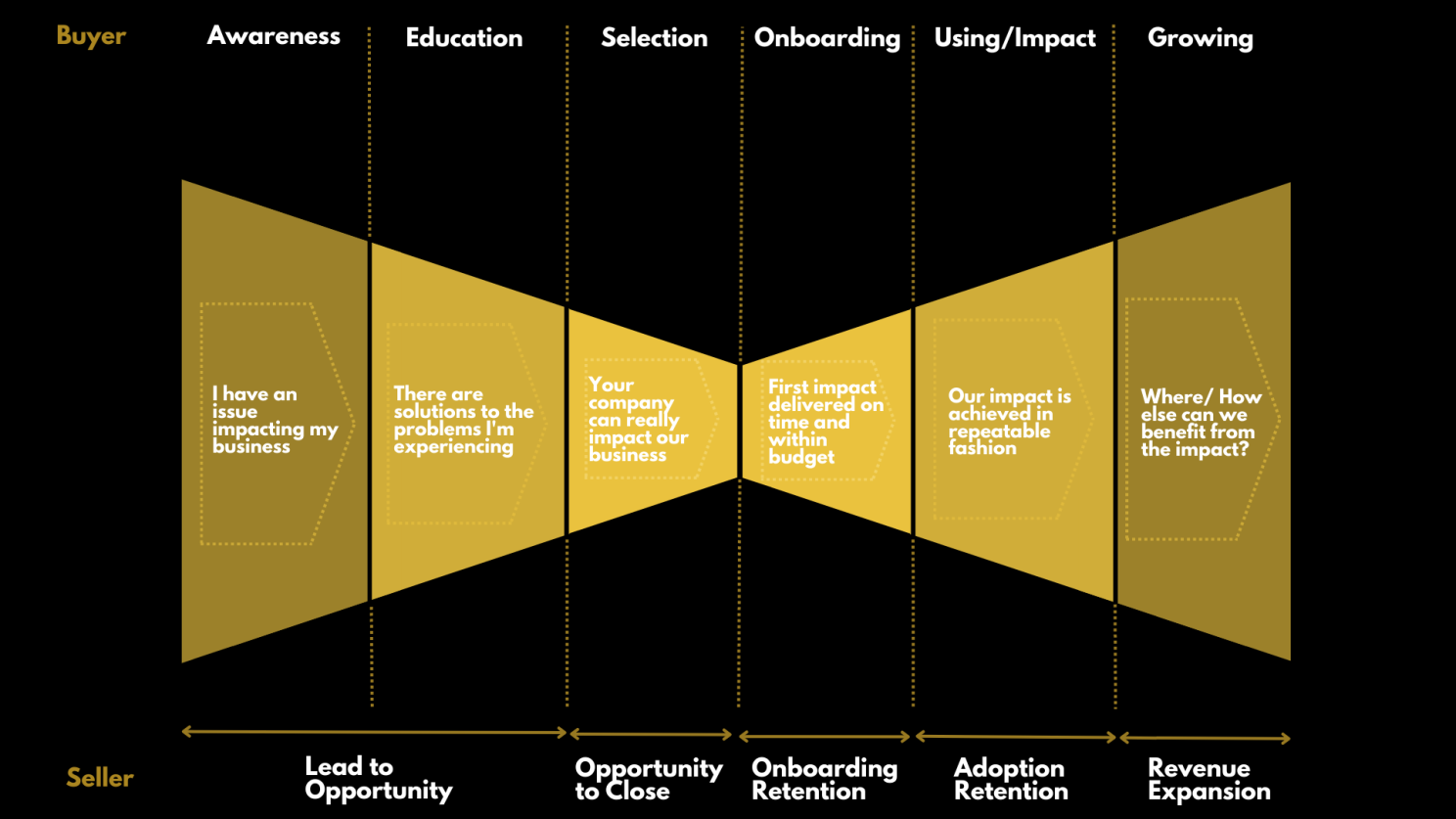.webp)

.gif)

Growth is the central theme of every start-up. Therefore, all founders know that in order to obtain further financing, they must grow strongly while also convincing with good structures that transparently display any KPIs. Of course, all founders and GTM leads also want to build a first-class GTM organization that makes this possible. However, reality often looks very different and organizations are faced with the following challenges 👇🏼
➥ The revenue organization is not coordinated and reps do their own thing.
➥ There is a mixture of good and bad practices that make it difficult for leaders to know what actually leads to success.
➥ Investors do not trust the structures and metrics and do not believe in the success of the company.
➥ Reps are dissatisfied because there are no clear expectations and instructions on how they can improve, learn, and earn more.
➥ Marketing generates leads that do not match the Ideal Customer Profile.
➥ The CX department onboards customers without knowing exactly what impact the sales team has promised them.
➥ Management has no clarity on performance metrics and cannot rely on proper planning and forecasting.
If you know some of these challenges, you are missing a clear system to align and guide your teams.
The most important factor for fast but efficient growth is a well-structured customer journey. However, in order to enable an optimal customer journey, your entire revenue organization, consisting of marketing, sales, and customer success, must work together on a data model and steer the boat in a common direction.
👉🏼 A Revenue Playbook 📚 makes exactly that possible and provides you with a system that will massively accelerate your revenue growth and give you the ultimate overview of your revenue organization at all times.

The Revenue Playbook is a toolset that contains the most important best practices for each role with customer contact during the customer journey and serves as the basis for an optimally structured customer journey. The most successful and revenue-generating customers we work with at Cremanski & Company benefit greatly from the Revenue Playbooks we have created for them.
It is an essential a step-by-step guide for all commercial areas, from marketing and sales to sales development and key account management, up to customer success.
The playbook outlines in detail how to work in each phase, who is responsible for what, and what the exact rules are. This ensures that the go-to-market organization is optimally aligned and functioning.
Typically, a RevOps Manager is responsible for initiating and maintaining the Revenue Playbook. It must be continuously developed and adapted to the various stages of the company throughout its lifetime.
In the development phase of the playbook, the focus is mainly on structuring the customer journey (CJ) and defining who is responsible for what at what time in the organization. In the early stages of your startup, various components such as the "Command of Message", ICP, Buyer Profile and SOPs are tested and improved based on customer feedback. Later, these extremely valuable insights can be built upon to optimise the CJ and the entire GTM approach.
In the second phase, when transitioning from "Founder-led Sales" to "Team-led Sales," the playbook enables founders to onboard the first professional GTM team and transfer the structured insights they have gathered.
In a later phase, when the organization grows and demonstrates its GTM fit, the playbook is essential to ensure optimal ramp-up of new hires in the GTM team. For example, when you hire your first CRO to scale your business, the playbook becomes the source of truth for every customer-facing role and activity. The best CROs are absolutely thrilled with the playbook because it is the tool that allows them to align the entire revenue organization along the defined processes and ensure high optimisation and efficiency.
The Revenue Playbook of your company is absolutely individual and tailored precisely to your company. Nevertheless, our years of experience show that every successful Revenue Playbook should contain the following key components at its core:
The ICP is at the beginning of every customer journey and sales strategy. It hypothetically describes the perfect customer for your product with all its characteristics and provides insights into which customers you should focus your resources on to scale quickly.
When creating the ICP, it is also about personalising communication and touchpoints along the customer journey and addressing only the appropriate customers. It also provides information about the further approach regarding marketing, inbound, and outbound.

Compared to the ICP, BPCs do not deal with the ideal customer as a whole company, but with the various characteristics that influence decision-making.
The BPCs contain information about LinkedIn titles, superiors, experience level, tenure, and skillset. The cards provide insights into what the decision-makers think and value, highlight what they do and what important challenges they have. In addition, each BPC also includes a value matrix and the emotional, critical, and rational influences of the person on a decision, providing even deeper insights into their mindset.
In addition, BPCs also contain so-called "battle cards" of competitors that provide important and useful information about your competition (e.g. strengths, weaknesses, products, prices, etc.).

As part of a Revenue Playbook, a value proposition describes the unique selling point of a company compared to its competitors. It's like the "charm offensive" of your company and indicates what you can offer to customers that makes you unique and convinces them to buy your products or services.
Pocket stories are an effective method of convincing customers through storytelling and giving them a vivid picture of the product and its benefits.
Up to three exemplary user stories are listed in each Revenue Playbook, following a clear structure:
1. They start with a similar situation that another customer has experienced.
2. They describe the consequences that can occur if the pain and problem are not solved.
3. They show what positive effects occur when the problem is solved.
In this way, pocket stories can be used to convince potential customers at different stages of the sales funnel. They prove to be an effective sales tool because they contain an emotional component and allow potential customers to identify with the experience of other customers. At the same time, they appeal to customers rationally and serve as social proof.

An effective sales methodology provides a scientific and systematic approach to improving processes, conversion rates, win rates, and shows how you can continuously optimise and improve your organization.
An important part of a successful sales methodology is lead qualification. The SPICED method can be used to understand:
➥ The potential customer's situation
➥ The pain they are currently experiencing
➥ The impact this has
➥ The critical event that leads to decision-making
➥ The decision the potential customer will ultimately make.
The sales methodology also specifies who is responsible for the different stages of qualification and how to approach the different buyer personas.
The CJ is the backbone of your playbook and revenue organization. It describes the process a customer goes through to acquire a product or service and reflects how the buyer goes about making decisions. The playbook allows you to structure your organization along this process so that you can successfully manage the crucial moments during the CJ and deliver outstanding performance at every stage of the buyer journey.
Additionally, the Revenue Playbook provides insight into systems and tools for each phase to enable the team to design an optimal CJ. Each team (e.g. Demand Generation, Qualification, Deal Flow, Onboarding & Activation, Lifetime Management) has its own section in the playbook, detailing SOPs, KPIs, DOs & DONTs, and the systems to be used, so that each team member can use the Revenue Playbook as a single source of truth for their work.

For our SaaS customers, we work with Winning by Design's (WbD) Bowtie model and provide clear guidelines and metrics for each role in each phase. This model breaks down the end-to-end CJ in detail into its various phases and includes an explanation of the goal, key actions, and exit criteria for each specific phase.
In addition to the core elements described so far, additional chapters, scripts, blueprints, and important information can be included in each individual case to enable even better support in the sales process.
Overall, I can say with great confidence that a Revenue Playbook is absolutely indispensable. It is the most important tool that you as a startup need right now to build a professional and successful GTM organization.
Forget weak revenues and toss out outdated B2B revenue strategies, because with the Revenue Playbook, you will revolutionise your revenue organization and catapult your growth to an unprecedented level.
Presenting our distinguished clientele! We collaborate closely with visionary B2B tech and software companies, intricately shaping their comprehensive Revenue Architecture. Take a look at who we have already served.

Explore our captivating customer success
stories here.


























































































You have questions? Our Founder and Managing
Partner Michael is looking forward to hearing from
you.